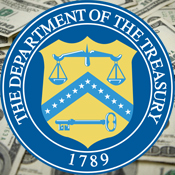Treasury Unveils New Plan for 'Toxic' Assets
Public/Private Partnership at Heart of Program to Stabilize Banking Institutions
The Treasury's plan aims to remove "toxic" assets with help from the Federal Reserve and the Federal Deposit Insurance Corp. It is seen as the biggest move so far by the U.S. government to overcome one of the two largest obstacles in the banking sector - bad assets. The other obstacle is the shortage of capital at big institutions.
The new plan, called the Public-Private Investment Program, will use taxpayer funds to begin partnering with private investors to buy up the mortgages and other loans that have put many banks at risk. Treasury's goal is to purchase up to at least $500 billion of these "bad assets" that are in danger of default, including subprime mortgages. By taking this action the Treasury will help many of the country's biggest banks that are continuing to bleed billions in losses from their balance sheets.
The Treasury will begin by committing $75 billion to $100 billion to start the program, and says it will see how the program progresses before chipping in more funds. Geithner announced the framework of this plan in February.
This program is one of several initiatives of the Treasury's Financial Stability Plan, with the American Recovery and Reinvestment Act, is to lay the foundations for economic recovery, according to Geithner. Stock futures were up sharply on this news hinted over the weekend, and may indicate how markets will react to the plan.
How it Works
The plan is for the program to hold auctions among banks, selling the bad assets to investors. The federal government hopes to attract private investors with a balanced price that doesn't hit the banks too hard or cost the government too much to purchase the troubled mortgages. The Treasury's plan to buy up to $1 trillion in toxic assets from banks will include programs supported by the Treasury Department's bailout fund, the Federal Reserve and the Federal Deposit Insurance Corp. Elements of the plan include:
These toxic assets are a major stumbling block to recovery. The depth of the problem first became public after the housing bubble burst in 2007, resulting in losses for investors and banks. The losses were exacerbated by weak underwriting standards used by some lenders and the growth of complex securitization products, some of which weren't fully understood. The shift by banks to reduce risk led to wide sell offs and dramatic price drops. At the same time as the prices dropped, investors left these markets causing reductions in market liquidity.
All of this has culminated in many banks being limited in their ability to lend, causing a ripple effect of increased cost of credit throughout the system.
Initial Reaction
As the industry absorbs the details of Treasury's plan, John Jay, a senior analyst at Aite Group, a financial industry research firm based in Massachusetts, gave his insight on what the program means.
Jay sees this plan as "similar to (former Treasury Secretary) Henry Paulson's original plan. But his was hazy; this plan gives more examples and has been positively responded to thus far in the stock markets."
Aite's Jay sees this plan as definitely providing the needed liquidity with the FDIC backing. He adds these assets "will be for firms that know what they're doing. They would have to provide the proof they've got capital and a history in fixed-income products."
Jay believes this program is definitely going in right direction. "The real problem so far in selling these bad assets has been price discovery. With the government providing some of the capital and backing (by way of FDIC,) if that helps sellers and buyers meeting at an agreed upon price, this is a good thing."
Mega-banks such as Citigroup and Bank of America stand to benefit the most from this program, he observes. "It wasn't so long ago that Citi's stock was trading under a buck, and now it's at $3." How quickly does Jay expect the sale/auction process to take? "I can't imagine it being too long of a process, stretching beyond three to six months." If it goes past six months, it would be self defeating. "Firms such as hedge funds and private equity funds are quick to move. If something is priced to their liking, it won't sit around long."
For more insights from John Jay, listen to his exclusive interview.













